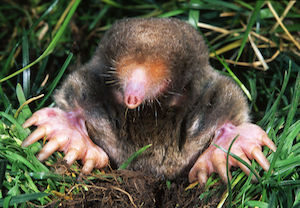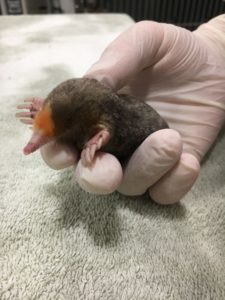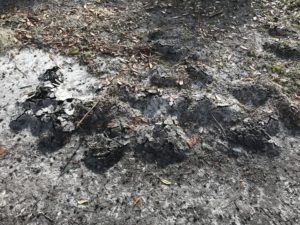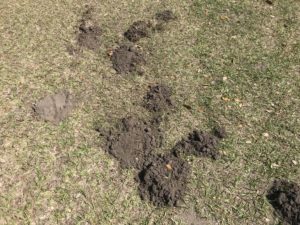 Fort Frederica has abundant wildlife. One of the most abundant forms of wildlife in the park is the Eastern Mole. We see their effects every day in the park. In fact, they are our best archaeologists because they regularly dig up artifacts.
Fort Frederica has abundant wildlife. One of the most abundant forms of wildlife in the park is the Eastern Mole. We see their effects every day in the park. In fact, they are our best archaeologists because they regularly dig up artifacts.
The Eastern Mole is common across the eastern half of the United States. It prefers soft soils, so the sandy soil in coastal Georgia is ideal mole habitat. You can see the uplifted dirt of mole tunnels all over Fort Frederica. We have some especially persistent moles close to the RV. Their molehills are surprisingly large considering how small the moles are themselves.
 The Eastern Mole is generally 5 to 7 inches long. Their front paws have long claws that enable them to dig up to 18 feet of tunnel in an hour. That’s a lot of excavating! When people pick up pieces of pottery they find in the park, it is usually because a mole has pushed it to the surface.
The Eastern Mole is generally 5 to 7 inches long. Their front paws have long claws that enable them to dig up to 18 feet of tunnel in an hour. That’s a lot of excavating! When people pick up pieces of pottery they find in the park, it is usually because a mole has pushed it to the surface.
Moles have eyes, but their eyelids are fused shut. They can only distinguish light from dark. Because of this, they are active during the day and the night. Eastern moles have excellent hearing although they do not have external ears. Their ears are located beneath their fur. The moles are able to spent 99% of their time in their tunnels because they can reuse their air and can tolerate higher levels of carbon dioxide than other mammals.
During their brief forays above ground, eastern moles are easy prey for owls, coyotes, dogs, and cats. Cassie, the Labrador retriever next door, likes to dig for the moles when she smells or hears one close to the surface.
We have talked about ways of getting rid of the moles in the park. But there are so many of them and they are everywhere, so we just learn to live with them. If you are walking in the park, you will want to be careful. Stepping in a mole hill or tunnel can trip you up.



